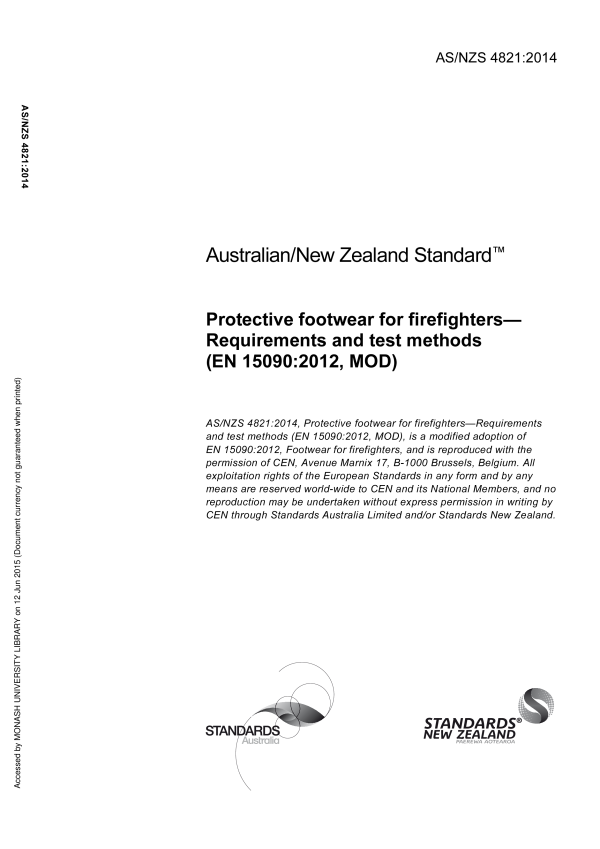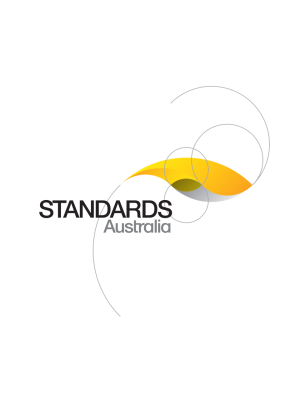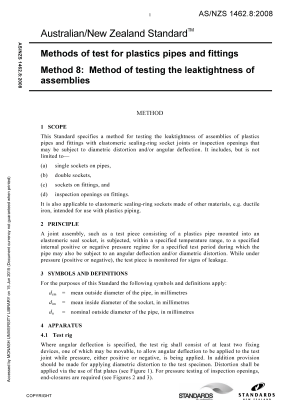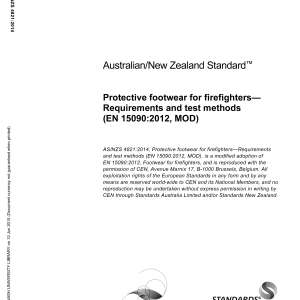🔍

Purchase the full subscription package now and enjoy a 40% discount, along with free updates for future editions.
AS/NZS 4821:2014
$213.50
Protective footwear for firefighters — Requirements and test methods (EN 15090:2012, MOD)
Adopts EN 15090:2012 to provide minimum performance requirements for firefighters’ footwear intended for firefighting and associated activities to enable the manufacture and selection of footwear that does not melt or ignite when exposed to flame or risks to which firefighters may be exposed.
Table of contents
Header
About this publication
PREFACE
INTRODUCTION
1 Scope
2 Normative references
3 Terms and definitions
4 Classification, design and type
4.1 Classification
4.2 Design
4.3 Type
5 Sampling and conditioning
6 Requirements
6.1 Types and classifications
6.2 General requirements
6.3 Thermal behaviour
6.3.1 Insulation against heat
6.3.2 Radiant heat
6.3.3 Flame resistance
6.4 Compression resistance of the toepuff
6.5 Resistance to chemicals
6.6 Electrical properties
6.6.1 General
6.6.2 Electrically insulating footwear
6.6.3 Antistatic footwear
6.7 Outsole
6.7.1 Cleat design
6.7.2 Cleat height
6.7.3 Cleat height in the waist area
6.7.4 Heel breast
6.8 Zipper
6.8.1 Zipper construction
6.8.2 Zipper (slide fastener) puller attachment strength
6.8.3 Zipper (slide fastener) lateral strength
7 Test methods
7.1 Insulation against heat
7.2 Radiant heat
7.3 Flame resistance test
7.3.1 Conditioning and sampling
7.3.2 Procedure
7.3.2.1
7.3.2.2
7.3.2.3
7.3.2.4
7.3.2.5
7.3.2.6
7.4 Compression resistance of the toepuff
7.5 Zipper
7.5.1 Puller attachment strength
7.5.1.1 Principle
7.5.1.2 Apparatus
7.5.1.2.1 Tensile machine
7.5.1.3 Procedure
7.5.2 Lateral strength
7.5.2.1 Principle
7.5.2.2 Apparatus
7.5.2.2.1 Tensile machine
7.5.2.3 Test specimens
7.5.2.4 Procedure
8 Marking
9 Information to be supplied
9.1 General
9.2 Antistatic footwear
9.3 Insocks
Annex A
A.1 General
A.2 General approach for conducting a risk assessment
A.2.1 Risk identification
A.2.2 Risk evaluation
A.2.3 Risk control
A.3 Recommended factors for identifying and evaluating fire fighter risks
A.3.1 General
A.3.2 Level of firefighter training and experience
A.3.3 Level of fitness and health of the firefighter
A.3.4 Function of the firefighter at the incident scene
A.3.5 Environmental conditions at the incident scene
A.3.6 Specific hazards to be faced at the incident scene
A.3.7 Known limitations of footwear for firefighters and other PPE
A.3.8 Appropriate fit of footwear for firefighters
A.3.9 Type and application of command system at the incident scene
A.4 Types of footwear for firefighters
Annex B
B.1 General
B.2 Criteria for the assessment of the state of footwear
B.2.1 Insulation against heat
B.2.2 Radiant heat
B.2.3 Flame resistance
Annex C
C.1 General
C.2 Criteria for the assessment of the state of footwear
Annex ZA
Bibliography
APPENDIX ZZ
ZZ1 INTRODUCTION
ZZ2 REFERENCED DOCUMENTS
ZZ3 VARIATIONS
Cited references in this standard
Content history
[Current]
[Superseded]
DR AS/NZS 4821
EN 15090:2012
Please select a variation to view its description.
| Published | 18/06/2014 |
|---|---|
| Pages | 40 |
Please select a variation to view its pdf.



